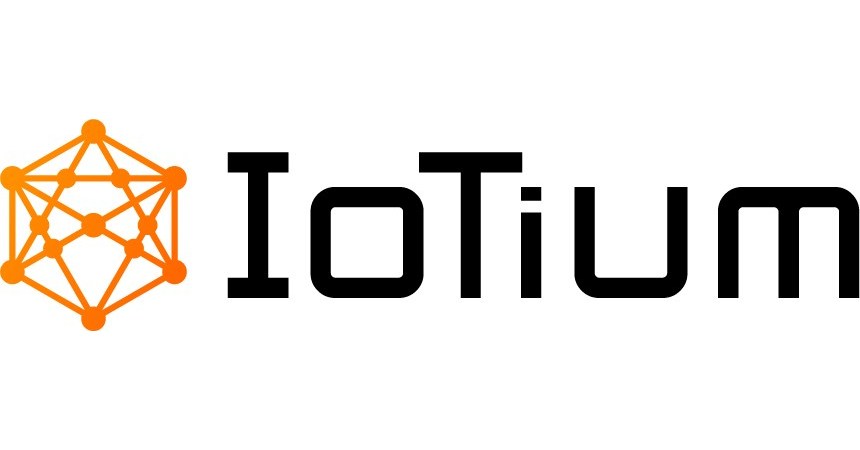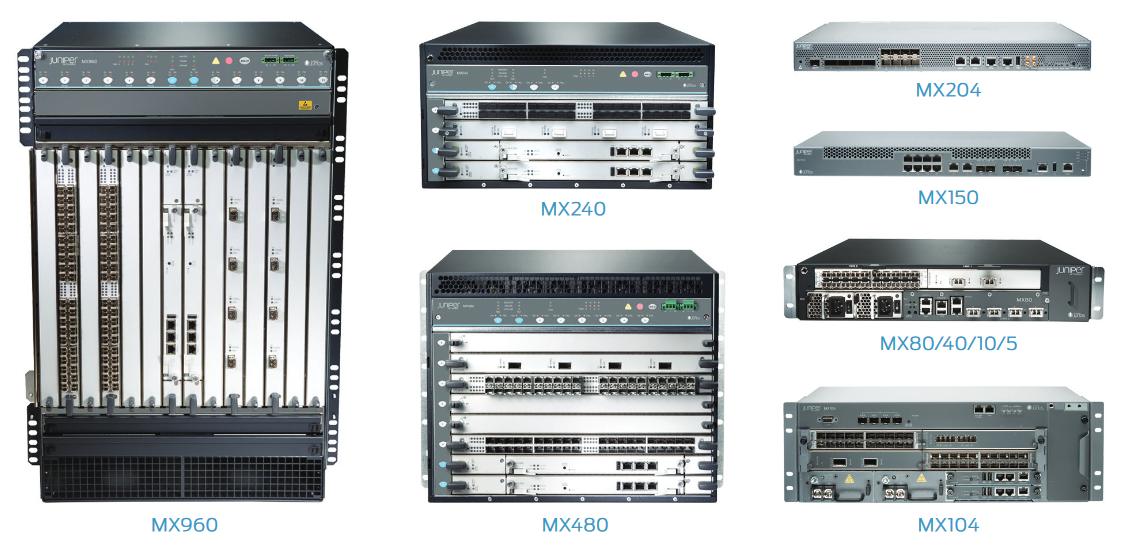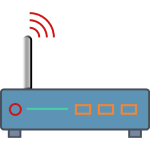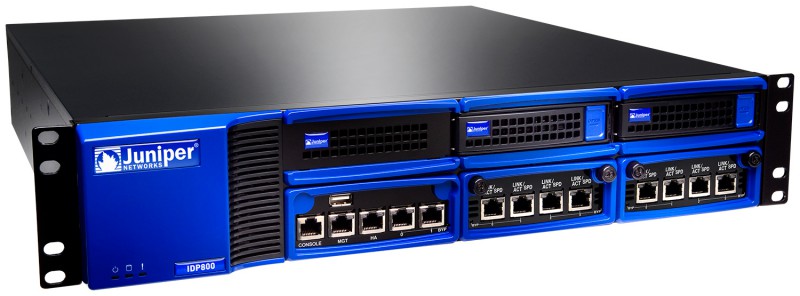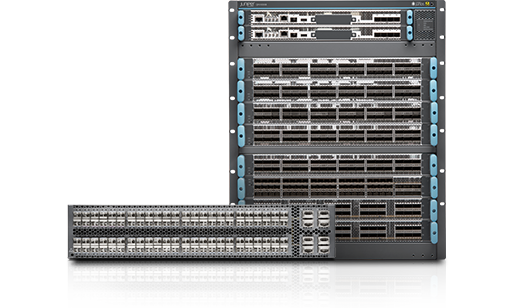View
Sorting
Products found: 9
IONU Security Platform
IoTium OT-NET
Juniper Cloud CPE with SD-WAN
- Cloud CPE Centralized Deployment Model (centralized deployment). In the centralized deployment, customers access network services in a service provider’s cloud. Sites that access network services in this way are called service edge sites in this documentation.
- Cloud CPE Distributed Deployment Model (distributed deployment), also known as a hybrid WAN deployment. In the distributed deployment, customers access network services on a CPE device, located at a customer’s site. These sites are called on-premise sites in this documentation.
- A combined centralized and distributed deployment. In this deployment, the network contains both service edge sites and on-premise sites. A customer can have both cloud sites and tenant sites; however, you cannot share a network service between the centralized and distributed deployments. If you require the same network service for the centralized deployment and the distributed deployment, you must create two identical network services with different names.
Juniper MX Series 5G Universal Routing Platform
Virtualized, full-featured, carrier-grade router is ideal for NFV environments, rapid service introduction, and cost-effective service scale-out.
virtual MX (vMX)
Виртуализированный полнофункциональный маршрутизатор операторского уровня идеально подходит для сред NFV, быстрого внедрения услуг и экономически эффективного масштабирования услуг.
MX5
Compact 40 Gbps router is software-upgradable through 160 Gbps of system capacity; ideal for enterprise applications as well as space- and power-constrained service provider facilities.
MX10
Compact 80 Gbps router is software-upgradable through 160 Gbps of system capacity; ideal for enterprise applications as well as space- and power-constrained service provider facilities.
MX40
Compact 120 Gbps router is software-upgradable through 160 Gbps of system capacity; ideal for enterprise applications as well as space- and power-constrained service provider facilities.
MX80
Compact 160 Gbps router is ideal for enterprise applications as well as space- and power-constrained service provider facilities.
MX104
Versatile 160 Gbps router offers a high level of redundancy; optimized for mobile backhaul, metro Ethernet, aggregation, and enterprise WAN applications.
MX150
The compact MX150 is a high-performance, feature-rich edge router that is ideally suited for lower bandwidth service provider and enterprise applications.
MX204
A compact multiservices router, the MX204 delivers ultra-high density in a 1 U power-efficient form factor to address the widest variety of service provider, mobile, data center, and cloud applications.
MX240
Modular router offers up to 3 Tbps of system capacity and embedded MACsec and IPsec encryption in a compact form factor; optimized for cloud, campus, enterprise, data center, service provider edge, cable, and mobile service core deployments.
MX480
Modular router delivers up to 9 Tbps of system capacity and embedded MACsec and IPsec encryption for cloud, campus, enterprise, data center, service provider edge, cable, and mobile service core deployments.
MX960
Modular router delivers up to 12 Tbps of system capacity and embedded MACsec and IPsec encryption for large cloud, data center, service provider, cable, and mobile service core deployments.
MX2008
40-Tbps modular, space-optimized carrier-grade router that provides ultra-high-density 10GbE, 40GbE, and 100GbE interfaces to help network operators efficiently address edge and core applications.
MX2010
40-Tbps modular carrier-grade router that provides ultra-high-density 10GbE, 40GbE, and 100GbE interfaces to help network operators efficiently address edge and core applications.
MX2020
80-Tbps carrier-grade router that provides ultra-high-density 10GbE, 40GbE, and 100GbE interfaces to help network operators efficiently address edge and core applications.
MX10003
Compact universal routing platform with ultra-high system capacity and interface density for long-term investment protection.
MX10008 и MX10016
Space- and power-optimized routing platforms with innovative universal chassis design deliver superior performance, versatility, and capacity.
Features:
Service Agility
Supports broadest range of business, residential, infrastructure, and enterprise applications and services.
Best-in-Class Architecture
A highly redundant platform powered by Junos OS, the MX Series offers always-on reliability and high performance at massive scale.
SDN Enabled
Seamless integration with standard-based SDN controllers such as the Contrail Cloud Platform makes the MX Series platform an SDN gateway between physical and virtual network elements.
Service Integration
Integrates a wide set of services—including carrier-grade NAT (CGNAT), stateful firewall, and deep packet inspection (DPI)—to address the widest range of applications and support network and service consolidation.
Physical and Virtual, with No Compromise
Consistent feature set across physical and virtual MX Series platforms ensures operational and service consistency.
Long-Term Investment Protection
Offers future-proof scale for long-term growth as well as investment protecting upgrade paths for existing MX Series customers.
Juniper Networks IDP Series
Juniper Networks JSA7500 Secure Analytics Appliance
- End-to-End Visibility and Detection. Detects an end-host’s visit to a potentially malicious site that correlates with a potential indicator of an upcoming cyber attack.
- Incidence Response and Forensics. Effectively discovers, monitors, tracks, and distills security incidents to stop cyber attacks before they occur.
- Regulatory Compliance. Provides collection, correlation, and reporting on compliance-related activity to meet strict regulatory mandates.
- Dashboard Reporting. Provides graph and dashboard reporting on event data.
- Flow Detection. Enables taking proactive action(s) against security threats with flow detection.
- Powerful Analytics Engine. Uses analytics engine to detect violations and anomalies.
- High Capacity. Supports up to 35,000 eps per event processor.
- Event Processor Support. Supports up to 250 event processors per console.
Juniper Next-Generation Firewall (NGFW)
- AppTrack identifies applications on the network to assess their security risk and address user behavior. Contextual information helps you gain insight into which applications are permitted and the risk they may pose.
- AppFW provides policy-based enforcement and control, blocking access to high-risk applications and enforcing user-defined policies. Reports on application bandwidth usage deliver further insight, and you can throttle any application traffic not sanctioned by the enterprise.


